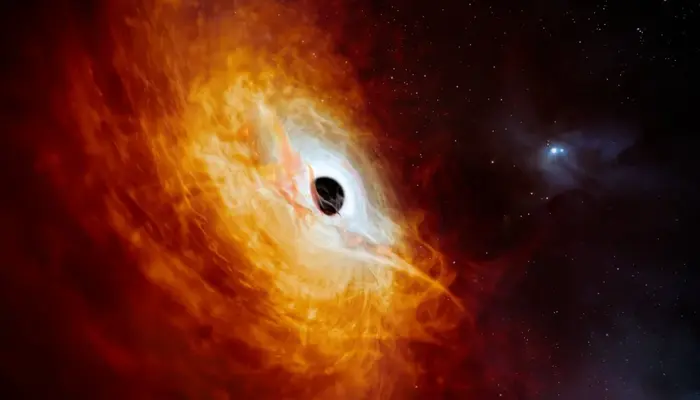Supermassive black holes sit at the centers of nearly every galaxy. Understanding how these giants formed has puzzled astronomers for years. Initially, it seemed straightforward: these black holes developed where matter concentrated over billions of years. However, new discoveries have altered this narrative, suggesting a more complex formation process.
Feeding Frenzy of Black Holes
Recent observations indicate that many supermassive black holes have not merely feasted leisurely on nearby matter. Instead, they appear to have undergone rapid growth in a feeding frenzy. The James Webb Space Telescope (JWST) has unveiled supermassive black holes that challenge our existing theories about their formation timeline. Instead of taking their time, these black holes gorged on matter, suggesting they reached their massive sizes much earlier than expected.
The Role of the Webb Telescope
The JWST has proven pivotal in examining the early Universe and identifying supermassive black holes. These observations have pushed the boundaries of theoretical limits regarding black hole growth. Matter falling into a black hole emits radiation, with a faster feeding rate resulting in increased radiation. This radiation can repel nearby matter, limiting the black hole’s growth unless it receives direct matter feeds. The JWST has identified early black holes that seemingly pushed against these limits for their entire existence.
ECC Approves Circular Debt Management Plan for 2024-25
A Possible Solution
Remarkably, the JWST has also spotted a black hole that appears to have fed at 40 times the theoretical limit for millions of years. This extraordinary growth rate suggests that it could accumulate enough mass to qualify as a supermassive black hole. The implications of this finding may help resolve the mystery surrounding the formation of these cosmic giants.
Understanding Accretion Disks
When matter falls into a black hole, it typically forms an accretion disk, a swirling mass that heats up from collisions. As the material loses energy through radiation, it eventually crosses the event horizon of the black hole. The brightness of the accretion disk increases with the amount of matter present, but so does the radiation pressure, which can drive away additional matter before it can be consumed. The threshold at which this balance occurs is known as the Eddington Limit. Larger black holes have higher Eddington Limits.
The Eddington Limit Dilemma
Exceeding the Eddington Limit is theoretically possible, but it requires matter to fall directly into the black hole rather than first forming an accretion disk. This scenario necessitates a unique configuration of gas clouds, which is unlikely to remain stable for extended periods.
Formation Challenges
Most supermassive black holes seem to originate from smaller black holes formed by the deaths of massive stars. However, these initial black holes typically have masses a few times that of the Sun. Even with exceptionally massive stars in the early Universe, the expected progenitors of supermassive black holes are around 100 solar masses. Theoretical models suggest the direct collapse of gas clouds could form larger black holes, but these remain unproven.
New Insights from LID-568
Recent studies have focused on LID-568, a luminous object first identified by the Chandra X-ray Telescope. This black hole’s brightness at X-ray wavelengths indicates a high feeding rate, making it a prime candidate for understanding supermassive black hole formation. Infrared imaging reveals that the light emanates from its accretion disk rather than stars in its galaxy, reinforcing the notion that LID-568 may be consuming matter at an unprecedented rate.
Follow Day News on Google News, Instagram, YouTube, Facebook, Whats App, and TikTok for latest updates
